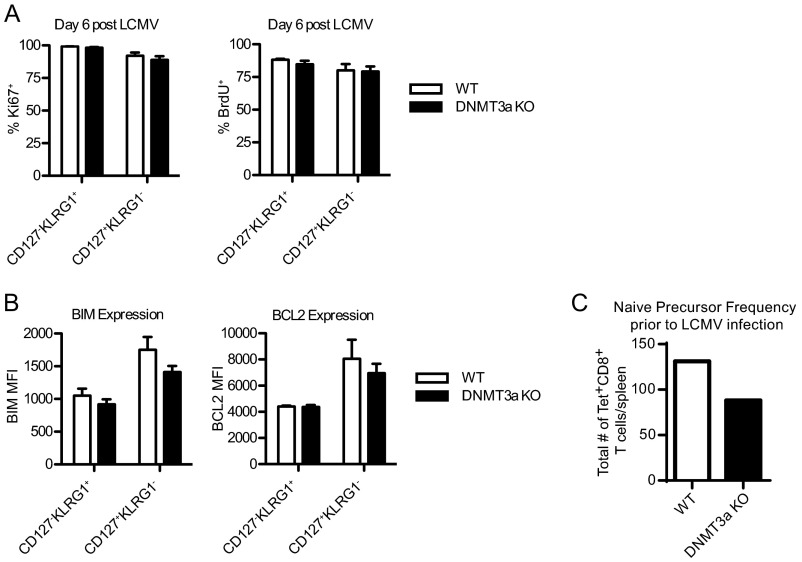Fig. S2.
DNMT3a loss does not affect CD8+ T-cell proliferation, survival, or precursor frequency. (A and B) WT or DNMT3a KO littermate mice were infected with LCMV and splenocytes were isolated 6 d later. Some mice were administered BrdU in their drinking water for 1 d before being killed. Antigen-specific gp33–41-specific CD8+ T cells were detected by H-2Db gp33–41-tetramer and surface stained for CD127 and KLRG1 along with intracellular Ki67 (A, Left) and anti-BrdU (A, Right), BIM (B, Left), or BCL2 (B, Right). All bar graphs display mean ± SEM, n = 4 mice per group. No differences are statistically significant. This experiment was performed three times with similar results. (C) Naïve gp33–41-specific CD8+ T-cell number before LCMV infection was determined by staining pooled lymphocytes from the spleens and lymph nodes of naïve WT or DNMT3a KO mice with H-2Db gp33–41-tetramer-PE. Tetramer+ T cells were enriched by magnetic separation following incubation with anti-PE microbeads. No increase in number of naïve gp33–41-specific CD8+ T cells was seen in DNMT3a KO mice.

